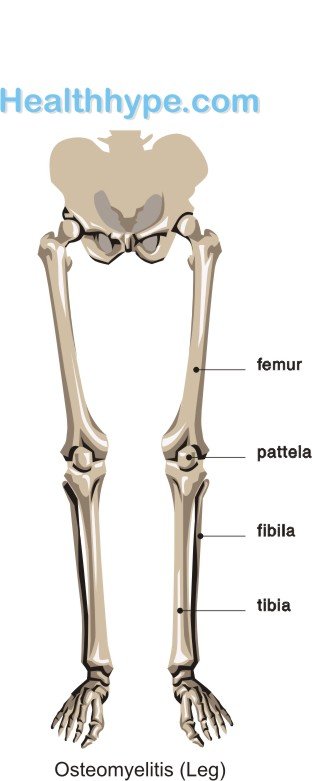Leg Pain in Children
Leg pain is a common symptom in children and in most cases it is not an indication of any serious cause. However, persistent or severe pain should not be ignored as there may some underlying pathology that requires medical attention. As with most childhood complaints, leg pain should be monitored to verify if it is a means of getting attention or whether there is actual signs and symptoms to indicate a more serious cause. Some of the possible causes of leg pain, specifically in children, may include :
- Growing pains is a term that is commonly used for nighttime leg pain in young children without any apparent cause. Nonetheless, growing pains causes much discomfort to the child and can be one of the causes of childhood insomnia. It usually occurs in young children between the ages of 3 and 12 years, is not localized to any part of the leg, does not affect the joints, and usually affects both the legs. It is most often felt in front of the thighs, calves, or back of the knees as a throbbing or aching pain. The exact cause is not known but it may be due to overuse of the muscles of the leg, especially in hyperactive children. The pain is not associated with a limp and occurs only in the late evening or at night and disappears the next day. No investigations are necessary unless some other pathology is suspected. The idea that growing pains are due to growth spurts has never been proven.
- Restless leg syndrome is a condition where the legs feel extremely uncomfortable when sitting or lying down. It can develop at any age, even in childhood, and adults having this syndrome often give a history of growing pains during childhood. The pain or discomfort is often described as a creeping, crawling, aching, tingling, or burning sensation.
- Fractures of the leg are common in children, causing severe pain, swelling, bruising, and difficult in walking. Children are usually more active than adults and their adventurous nature may make them more prone to falls and injuries, which could lead to a fracture. However, child abuse may also be a cause of a ‘broken’ leg.
- Legg-Calve-Perthes disease is a childhood condition which can affect children of any age but is most common in boys between the ages of 4 and 8 years. This disease is associated with temporary loss of blood supply to part of the hip joint, causing it to break easily. It usually affects one hip, but both sides may be involved in some cases. Pain with restricted mobility of the hip and knee joint as well as pain in the thigh, limping, and shortening of the leg on the affected side may be the presenting symptoms. Pain may get worse during activity while subsiding on rest.

- Osteomyelitis or bone infection may be associated with pain in the affected area of the leg, as well as other symptoms such as fever, pus draining from an open wound, lethargy, fatigue or irritability in young children. The infection can start in the bone itself or may travel from some other site in the body and may be caused by bacteria or fungi. In the leg, it usually affects the long bones of the thigh (femur) and shin (tibia).
- Osgood-Schlatter disease is a condition which develops frequently in teens and pre-teens who are highly active in sports. This tends to occur in activities that involve running, jumping, and quick changes of direction such as basketball, soccer, skating, gymnastics, and ballet. The condition often resolves on its own when the bones stop growing. A painful lump is felt just below the knee cap, associated with knee pain, especially while running, jumping or climbing stairs. Normally only one knee is affected but both sides may be affected too.
- Footwear, specifically ill-fitting shoes are very often the cause of foot pain in children. The rapidly growing body of a child may require regular change of footwear and special shoes should be considered for individual sports or play habits.
- Flat feet is a condition in which the arch of the foot collapses or does not develop at all, causing the entire sole of the foot to come in contact with the ground. The condition may be unilateral (in one foot) or bilateral (in both feet). Appearance of flat feet is normal in infants before the arch of the foot is fully developed. By 4 to 6 years of age, development of the arch should be complete. Children with flat feet often complain of foot pain and fatigue even on walking a short distance. Pain in the calf muscles is common and there may be associated pain in the knees as well.
These causes of leg and foot pain may also occur in adults, although it is more common in children and teens. Other causes of leg and foot pain should be identified if the causes above have been excluded. Refer to Right, Left Leg and Foot Pain.





